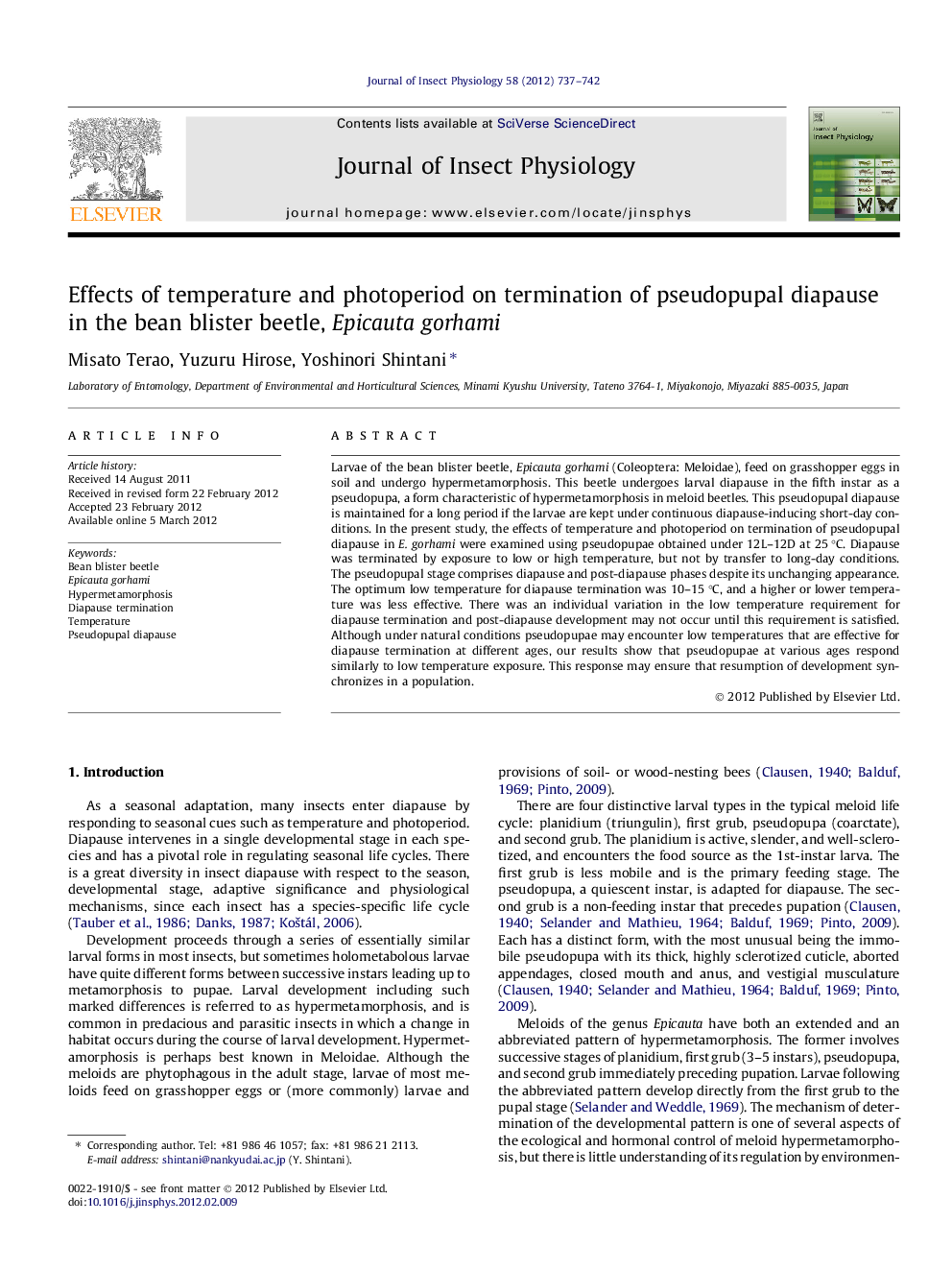| Article ID | Journal | Published Year | Pages | File Type |
|---|---|---|---|---|
| 5922171 | Journal of Insect Physiology | 2012 | 6 Pages |
Larvae of the bean blister beetle, Epicauta gorhami (Coleoptera: Meloidae), feed on grasshopper eggs in soil and undergo hypermetamorphosis. This beetle undergoes larval diapause in the fifth instar as a pseudopupa, a form characteristic of hypermetamorphosis in meloid beetles. This pseudopupal diapause is maintained for a long period if the larvae are kept under continuous diapause-inducing short-day conditions. In the present study, the effects of temperature and photoperiod on termination of pseudopupal diapause in E. gorhami were examined using pseudopupae obtained under 12L-12D at 25 °C. Diapause was terminated by exposure to low or high temperature, but not by transfer to long-day conditions. The pseudopupal stage comprises diapause and post-diapause phases despite its unchanging appearance. The optimum low temperature for diapause termination was 10-15 °C, and a higher or lower temperature was less effective. There was an individual variation in the low temperature requirement for diapause termination and post-diapause development may not occur until this requirement is satisfied. Although under natural conditions pseudopupae may encounter low temperatures that are effective for diapause termination at different ages, our results show that pseudopupae at various ages respond similarly to low temperature exposure. This response may ensure that resumption of development synchronizes in a population.
Graphical abstractDownload full-size imageHighlights⺠Larvae of the bean blister beetle, Epicauta gorhami, undergo hypermetamorphosis. ⺠The beetle has larval diapause in the 5th instar as a pseudopupa. ⺠This pseudopupal diapause is maintained if the larvae are kept under short-day conditions. ⺠Pseudopupal diapause is terminated by exposure to low or high temperature exposure.
